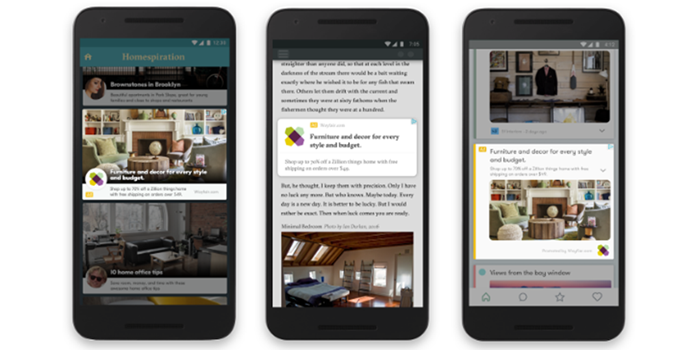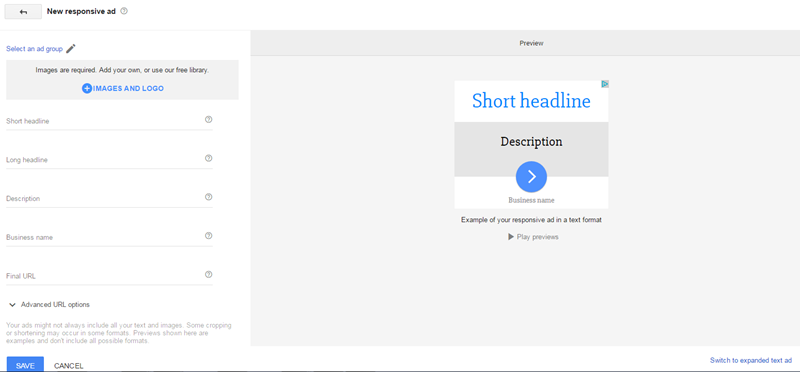In the realm of PPC advertising, it's no secret that mobile has opened new spaces to reach customers. In 2015, Google announced that mobile search volume had surpassed search via desktop and has been rolling out consecutive updates to improve the mobile experience for its users since that point. Advancing into 2016, Google removed right rail ads, transitioned to expanded text ads, and finally confirmed their shift towards a mobile-first index. These updates have been gamechangers for Paid Search. At the start of 2017, creating standard text ads for the Google Display Network (GDN) has also reached its imminent extinction to make way for another advancement.
So where does that leave advertisers who still want to run ads on GDN, but cannot create ongoing sets of new banner ads that fit a varying set of screen sizes? With the introduction of Responsive Ads, Google has addressed the need for ads that cater to users searching on any device. These responsive ads will unlock new native inventory so advertisers are able to reach users with ads that match the look and feel of the content they are naturally browsing. An advertiser must simply provide headlines, a description, an image, and a URL and Google will automatically build the ads.

OK, BUT WHY ARE RESPONSIVE ADS IMPORTANT?
Responsive ads automatically adjust their size, appearance, and format to fit just about any available ad space. For example, responsive ads may show as a native ad on one site and a dynamic text ad on another. It automatically transforms itself to fit precisely where it needs to go to meet the advertising goals, increasing reach and impact across the GDN while saving time in creating new assets and preventing ad fatigue. With responsive ads, one ad is created that can fit almost any ad space, and can transform into a native format that harmonizes with publishers' sites.
POTENTIAL RISK
Responsive ads are designed to work well across different sizes and styles when images follow Google specifications. When a responsive ad is created, we are able to preview some common layouts; however, it isn't possible to see every possible layout across the 2 million sites that make up the Google Display Network.
IMPLEMENTATION
To create responsive ads, we enter assets—including headlines, images, and a landing page. When the campaign is launched and assets are approved, AdWords will automatically generate the ads consumers will see. (Note: Not all assets will always be used when an ad shows. For example, an ad may show without images on occasion.)

Assets Required:
Images: Recommended size is 1200x628, with text no more than 20% of the image, max size 1MB. Image ratio of 1.91:1 and must be greater than 600x314
Logo: Image ratio of 1:1 and should be 128x128 or greater, recommended size is 1200x1200, transparent background is best but only if logo is centered
Short headline: 25 characters or fewer (First line of ad - may appear with or without description)
Long headline: 90 characters or fewer (First line of ad - appears in larger ads)
Description: Can be up to 90 characters and may appear after the short or long headline
Business name Final URL
RDI PERSPECTIVE
The Native Ad format has grown significantly over the past few years due to a loss of user interest in traditional banner ads. By having a diverse makeup of display ads, messaging and imagery will remain fresh and in user view. For best practice, these new mobile-focused ads should be implemented in addition to the current display media efforts and should also supplement current ads running in Google Search.
Responsive display ads offer more flexibility for non-banner ads to win auctions throughout available inventory on the GDN. This expands the reach across the most desirable placements and allows for testing various ad copy and creative options more frequently through re-marketing and display tactics.
The time to act is right now! Google already forces you to pick "Responsive Ad" from the drop-down in the platform. Google has let us know that responsive ads are the Google-preferred format going forward. Though there is no cut off date (yet) for when advertisers will be forced to adopt responsive ads, it’s extremely important to get ahead as the available GDN inventory starts to shift towards a responsive, native format.
